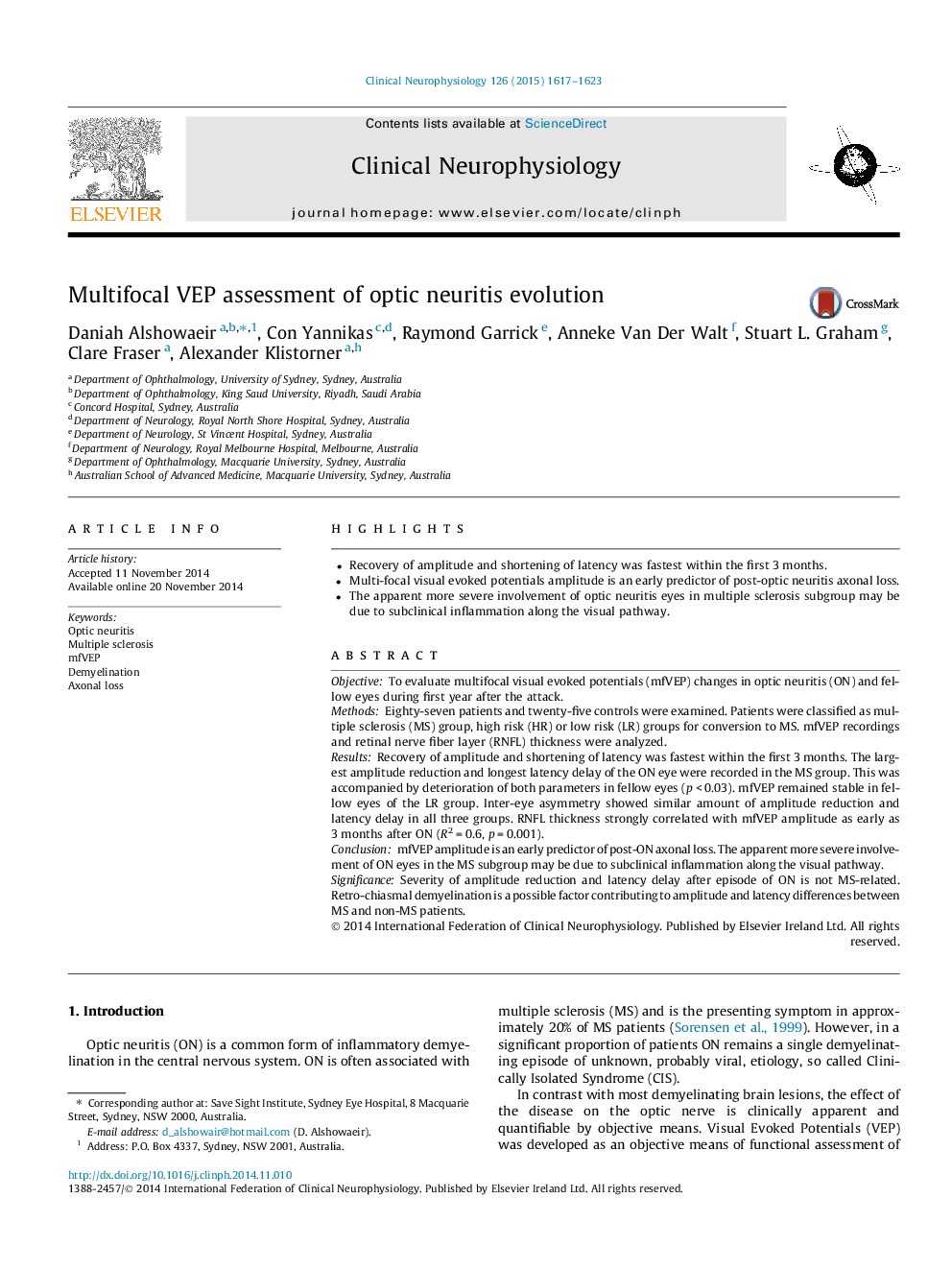| Article ID | Journal | Published Year | Pages | File Type |
|---|---|---|---|---|
| 3042563 | Clinical Neurophysiology | 2015 | 7 Pages |
•Recovery of amplitude and shortening of latency was fastest within the first 3 months.•Multi-focal visual evoked potentials amplitude is an early predictor of post-optic neuritis axonal loss.•The apparent more severe involvement of optic neuritis eyes in multiple sclerosis subgroup may be due to subclinical inflammation along the visual pathway.
ObjectiveTo evaluate multifocal visual evoked potentials (mfVEP) changes in optic neuritis (ON) and fellow eyes during first year after the attack.MethodsEighty-seven patients and twenty-five controls were examined. Patients were classified as multiple sclerosis (MS) group, high risk (HR) or low risk (LR) groups for conversion to MS. mfVEP recordings and retinal nerve fiber layer (RNFL) thickness were analyzed.ResultsRecovery of amplitude and shortening of latency was fastest within the first 3 months. The largest amplitude reduction and longest latency delay of the ON eye were recorded in the MS group. This was accompanied by deterioration of both parameters in fellow eyes (p < 0.03). mfVEP remained stable in fellow eyes of the LR group. Inter-eye asymmetry showed similar amount of amplitude reduction and latency delay in all three groups. RNFL thickness strongly correlated with mfVEP amplitude as early as 3 months after ON (R2 = 0.6, p = 0.001).ConclusionmfVEP amplitude is an early predictor of post-ON axonal loss. The apparent more severe involvement of ON eyes in the MS subgroup may be due to subclinical inflammation along the visual pathway.SignificanceSeverity of amplitude reduction and latency delay after episode of ON is not MS-related. Retro-chiasmal demyelination is a possible factor contributing to amplitude and latency differences between MS and non-MS patients.
